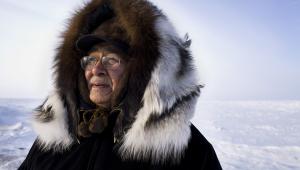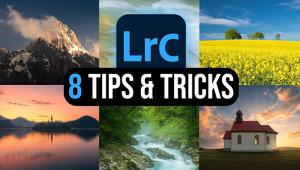Legal And Business Practices For Digital Photography; On Guidelines, Licensing, And More From ASMP’s Judy Herrmann Page 2
SB: During digital postproduction, how do you embed copyright
and contact information in images for project delivery and for posting to your
website?
JH: We take different approaches depending on the project and
the volume of images involved. Usually, we're delivering a very small
number of master files to the client so it's easy to use Photoshop templates.
For larger projects, we'll embed the metadata using Bridge. In addition
to the copyright and contact information, we're careful to always embed
the license language as well. That way, anyone who comes across the file for
any reason knows immediately what they can or can't legally do with the
file. And, if they want to use the file for a purpose not covered by the license,
they can easily find us to negotiate a new license.
SB: We can't discuss commercial digital photography without
the mention of licensing--what are your current resources for information
that you can share with our readers?
JH: If you're not familiar with licensing images, the
ASMP has a great resource at www.ASMP.org/licensing
that explains everything you need to know. Another valuable resource is the
Picture Licensing Universal System (www.usePLUS.org),
which includes a comprehensive glossary of licensing terms.
Doc Martens |
|
 |
|
|
SB: What has been your experience with using the UPDIG guidelines
(www.updig.org) and what
do they represent for digital photographic business practices?
JH: The UPDIG guidelines provide recommended best practices
for digital photography that have been endorsed by 20 trade associations worldwide.
The beauty of the guidelines is that they're designed to be very easy
to incorporate into your workflow. I would start with the Quick Guide, which
provides a short, easy-to-read overview of best practices and follow the links
to
in-depth information when and where you need it. UPDIG also includes a new Digital
Image Submission Guideline that helps clients understand and communicate their
true needs for a wide range of uses.
We've all been in the position where we've delivered a file, something
has gone wrong and we've wound up in a finger-pointing match trying to
figure out what happened and how to fix it. When everyone follows the UPDIG
protocols, these problems simply don't happen.
For clients, knowing a photographer is UPDIG compliant gives them confidence
that the files delivered will be tagged with an appropriate ICC profile, will
be sized correctly for the intended use, and will have embedded metadata giving
them easy access to the owner's copyright, contact information, and the
rights licensed.
I am very excited to report that the ASMP Digital Standards Committee, chaired
by UPDIG's primary author, Richard Anderson, has just received a substantial
award from the Library of Congress. These funds will allow for a significant
expansion of the guidelines with an emphasis on developing tools to help educate
photographers, printers, and clients on how to use UPDIG to get the most out
of their digital files.
Mulberry Handbag |
|
 |
|
|
SB: Is there anything you would like to add to inform our
readers about the current legal and business practices associated with digital
photography?
JH: I would love to steer your readers to more of the resources
available at ASMP's website. In addition to the licensing guide I referenced
earlier, our copyright tutorial (www.ASMP.org/copyright)
and releases module (www.ASMP.org/releases)
help photographers understand everything they need to know about protecting
themselves through registering their copyrights and obtaining appropriate releases.
Finally, our terms and conditions section provides language recommendations
for photographers working in the digital age.
- Log in or register to post comments
















































